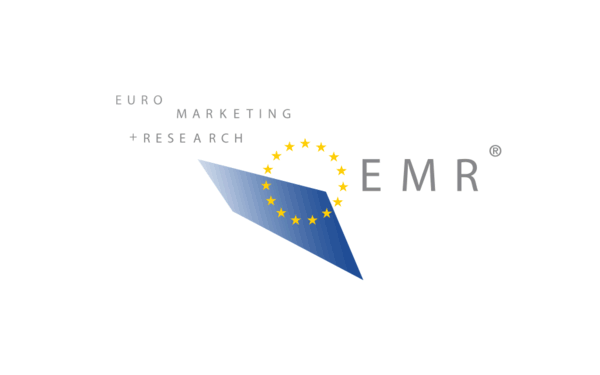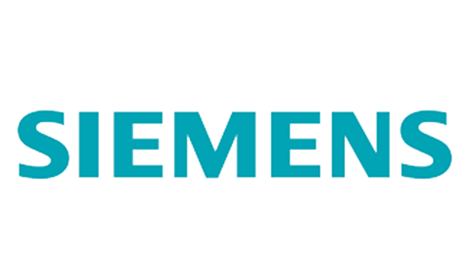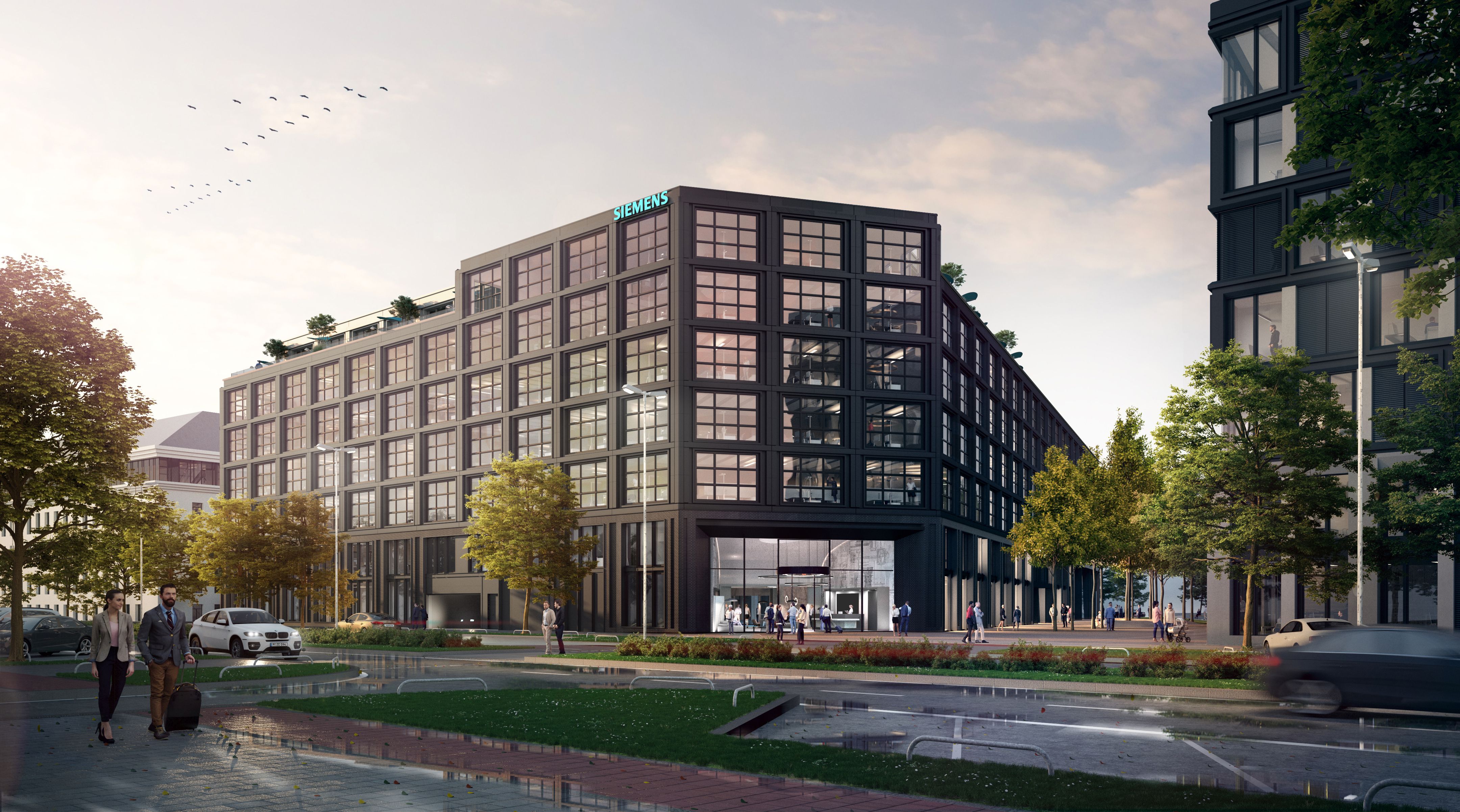Siemens – Siemens to open new offices in Munich’s Werksviertel district
- Thirty-three thousand square meters of modern urban office space near Munich’s East Station
- Flexible structures and modern workplace environment for about 4,000 people
- Forward-looking, sustainable building technologies and carbon neutral orientation
- Four strong, long-term Siemens locations in and around Munich
Siemens is planning to open a new office location near Munich’s East Station by the end of 2027. In the new building, which is currently under construction, the company intends to rent around 33,000 square meters of modern office space. Siemens’ offices in Munich’s Perlach district will be transferred to the inter-urban structure, which will be a prominent feature of the southern entrance to the city’s so-called Werksviertel district. The company sold and leased back the Munich-Perlach location in 2010. On completion, the new building will provide office space for about 4,000 people.
The New Work Concept, which was implemented at Siemens several years ago and enables, among other things, both in-office and mobile working, not only reduces floorspace requirements; it also poses novel challenges for interior architecture. Siemens will design the new office space as an innovative workplace environment, using its own state-of-the-art sustainability-oriented building technologies. The offices’ design and facilities will underscore Siemens’ positioning as a modern and attractive technology company.
“The new offices will offer us a great deal of flexibility while providing a modern, forward-looking workplace environment,” said Veronika Bienert, member of Siemens’ Managing Board with special responsibility for Siemens Real Estate, the Group’s internal real estate company. “The inter-urban location in Munich’s Werksviertel is also very easy to reach by public transport, offers an inclusive working environment and is located in an attractive area close to other innovative companies and to all the amenities a city has to offer, including shopping facilities, banks, postal services, cultural venues and a wealth of cafés, bars and restaurants. The new, sustainability-oriented building also supports Siemens’ declared goal of achieving carbon neutrality by 2030,” added Bienert.
Situated at Munich’s East Station, the Werksviertel district is one of the largest urban development projects in the Bavarian capital. In the future, a broad promenade flanked by two new office buildings will run from the southern entrance to the grounds. The buildings were designed by the Frankfort architecture firm Holger Meyer and are being constructed by the Cologne project developer Pandion. Siemens will move into one of the two new office buildings at the end of 2027.
Around two-thirds of the more than 6,000 people currently working at the company’s Munich-Perlach location will move to the new offices in the Werksviertel. Other teams will be transferred to the Siemens Technology Center Garching, which was opened north of Munich in 2024, to the Siemens Mobility location in Munich’s Allach suburb and to Siemens’ company headquarters in the city center. “With these four attractive locations, we’ll be strongly positioned in and around Munich and thus offer our people an appealing and flexible workplace environment,” said Bienert.
SourceSiemens
EMR Analysis
More information on Siemens AG: See full profile on EMR Executive Services
More information on Dr. Roland Busch (President and Chief Executive Officer, Siemens AG): See full profile on EMR Executive Services
More information on Veronika Bienert (Member of the Managing Board and Chief Executive Officer, Siemens Financial Services (SFS) with responsibility for the service portfolio of Siemens Real Estate and Global Business Services, Siemens AG): See full profile on EMR Executive Services
More information on Siemens Financial Services (SFS) by Siemens AG: https://new.siemens.com/global/en/company/about/businesses/financial-services.html + Aligning ourselves with the growth fields of electrification, automation and digitalization, we support customer investments with leasing solutions for equipment, project and structured financing, and corporate lending solutions. We provide capital for Siemens customers as well as external businesses. Our financial and industry know-how creates customer value and enhances customer competitiveness while building trust in new technologies and facilitating their market launch.
More information on Siemens Real Estate (SRE) by Siemens AG: https://www.siemens.com/global/en/company/about/businesses/real-estate.html + Siemens Real Estate Services (Service & Governance): Specializes in solutions for the operation of office, industrial and specialized buildings. Siemens Real Estate (SRE) offers Siemens as well as external customers holistic solutions for the entire real estate lifecycle – from strategy to development to operation. As a pioneer in corporate real estate management, SRE drives the transformation of office and production sites around the globe and significantly increases the efficiency and flexibility of its customers. This embraces the implementation of innovative workplace concepts that support future -oriented hybrid working, as well as the use of intelligent and sustainable solutions to strengthen the future viability and resilience of industrial sites. As such, SRE is also making a substantial contribution to the company’s target of being carbon neutral by 2030.
No longer reported since 2022. Transferred to the item Financing, eliminations and other items.
More information on Jörg Vocke (Chief Executive Officer, Siemens Real Estate (SRE), Siemens AG): See the full profile on EMR Executive Services
EMR Additional Notes:
- Carbon Dioxide (CO2):
- Primary greenhouse gas emitted through human activities. Carbon dioxide enters the atmosphere through burning fossil fuels (coal, natural gas, and oil), solid waste, trees and other biological materials, and also as a result of certain chemical reactions (e.g., manufacture of cement). Carbon dioxide is removed from the atmosphere (or “sequestered”) when it is absorbed by plants as part of the biological carbon cycle.
- Biogenic Carbon Dioxide (CO2):
- Biogenic Carbon Dioxide (CO2) and Carbon Dioxide (CO2) are the same. Scientists differentiate between biogenic carbon (that which is absorbed, stored and emitted by organic matter like soil, trees, plants and grasses) and non-biogenic carbon (that found in all other sources, most notably in fossil fuels like oil, coal and gas).
- Decarbonization:
- Reduction of carbon dioxide emissions through the use of low carbon power sources, achieving a lower output of greenhouse gasses into the atmosphere.
- Carbon Footprint:
- There is no universally agreed definition of what a carbon footprint is.
- A carbon footprint is generally understood to be the total amount of greenhouse gas (GHG) emissions that are directly or indirectly caused by an individual, organization, product, or service. These emissions are typically measured in tonnes of carbon dioxide equivalent (CO2e).
- In 2009, the Greenhouse Gas Protocol (GHG Protocol) published a standard for calculating and reporting corporate carbon footprints. This standard is widely accepted by businesses and other organizations around the world. The GHG Protocol defines a carbon footprint as “the total set of greenhouse gas emissions caused by an organization, directly and indirectly, through its own operations and the value chain.”
- CO2e (Carbon Dioxide Equivalent):
- CO2e means “carbon dioxide equivalent”. In layman’s terms, CO2e is a measurement of the total greenhouse gases emitted, expressed in terms of the equivalent measurement of carbon dioxide. On the other hand, CO2 only measures carbon emissions and does not account for any other greenhouse gases.
- A carbon dioxide equivalent or CO2 equivalent, abbreviated as CO2-eq is a metric measure used to compare the emissions from various greenhouse gases on the basis of their global-warming potential (GWP), by converting amounts of other gases to the equivalent amount of carbon dioxide with the same global warming potential.
- Carbon dioxide equivalents are commonly expressed as million metric tonnes of carbon dioxide equivalents, abbreviated as MMTCDE.
- The carbon dioxide equivalent for a gas is derived by multiplying the tonnes of the gas by the associated GWP: MMTCDE = (million metric tonnes of a gas) * (GWP of the gas).
- For example, the GWP for methane is 25 and for nitrous oxide 298. This means that emissions of 1 million metric tonnes of methane and nitrous oxide respectively is equivalent to emissions of 25 and 298 million metric tonnes of carbon dioxide.
- Carbon Capture and Storage (CCS) – Carbon Capture, Utilisation and Storage (CCUS):
- CCS involves the capture of carbon dioxide (CO2) emissions from industrial processes. This carbon is then transported from where it was produced, via ship or in a pipeline, and stored deep underground in geological formations.
- CCS projects typically target 90 percent efficiency, meaning that 90 percent of the carbon dioxide from the power plant will be captured and stored.
- Carbon Dioxide Removal (CDR):
- Carbon Dioxide Removal encompasses approaches and methods for removing CO2 from the atmosphere and then storing it permanently in underground geological formations, in biomass, oceanic reservoirs or long-lived products in order to achieve negative emissions.
- Direct Air Capture (DAC):
- Technologies extracting CO2 directly from the atmosphere at any location, unlike carbon capture which is generally carried out at the point of emissions, such as a steel plant.
- Constraints like costs and energy requirements as well as the potential for pollution make DAC a less desirable option for CO2 reduction. Its larger land footprint when compared to other mitigation strategies like carbon capture and storage systems (CCS) also put it at a disadvantage.
- Carbon Credits or Carbon Offsets:
- Permits that allow the owner to emit a certain amount of carbon dioxide or other greenhouse gases. One credit permits the emission of one ton of carbon dioxide or the equivalent in other greenhouse gases.
- The carbon credit is half of a so-called cap-and-trade program. Companies that pollute are awarded credits that allow them to continue to pollute up to a certain limit, which is reduced periodically. Meanwhile, the company may sell any unneeded credits to another company that needs them. Private companies are thus doubly incentivized to reduce greenhouse emissions. First, they must spend money on extra credits if their emissions exceed the cap. Second, they can make money by reducing their emissions and selling their excess allowances.


